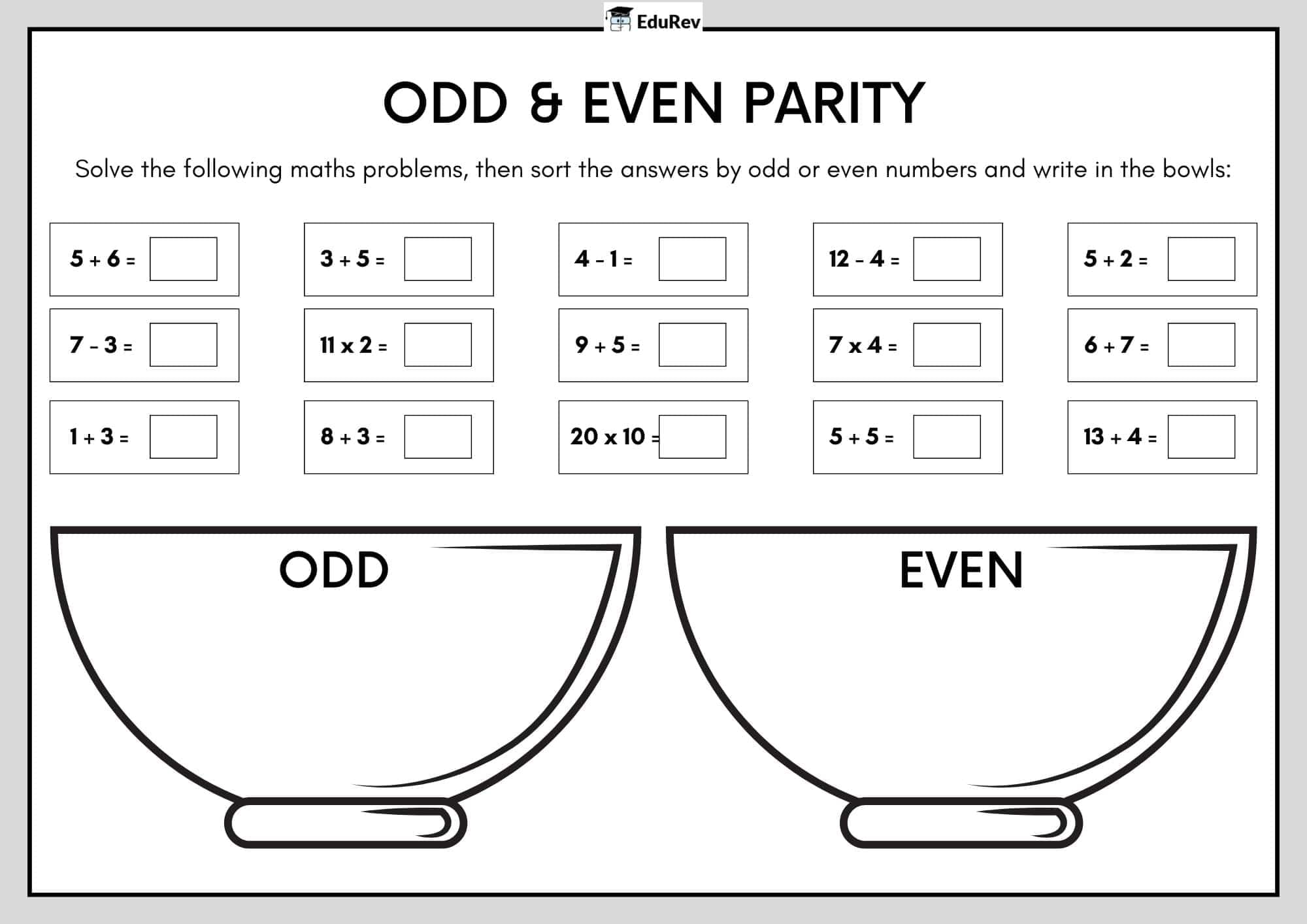Class 8 Exam > Class 8 Notes > Mathematics Class 8- New NCERT (Ganita Prakash) > Visual Worksheet: Odd and Even Parity
Visual Worksheet: Odd and Even Parity | Mathematics Class 8- New NCERT (Ganita Prakash) PDF Download

The document Visual Worksheet: Odd and Even Parity | Mathematics Class 8- New NCERT (Ganita Prakash) is a part of the Class 8 Course Mathematics Class 8- New NCERT (Ganita Prakash).
All you need of Class 8 at this link: Class 8
|
26 videos|133 docs|11 tests
|
FAQs on Visual Worksheet: Odd and Even Parity - Mathematics Class 8- New NCERT (Ganita Prakash)
| 1. What is the difference between odd and even parity in error detection? |  |
Ans. Odd parity and even parity are methods used in digital communication for error detection. In even parity, the number of 1's in a binary code must be even. If the count of 1's is odd, an extra bit is added to make it even. Conversely, in odd parity, the number of 1's must be odd. If the count is even, an extra bit is added to make it odd. This helps in identifying errors that may occur during data transmission.
| 2. How do you determine the parity bit for a given binary number? |  |
Ans. To determine the parity bit for a binary number, first count the number of 1's in the number. For even parity, if the count is odd, add a parity bit of 1; if it is even, add a parity bit of 0. For odd parity, if the count is even, add a parity bit of 1; if it is odd, add a parity bit of 0. This ensures that the total number of 1's meets the parity requirement.
| 3. Why is parity checking important in data transmission? |  |
Ans. Parity checking is crucial in data transmission because it helps in detecting errors that may occur during the transfer of data. It provides a simple and quick method to verify the integrity of data. By adding a parity bit, systems can ensure that data has not been altered or corrupted, thus maintaining the reliability of communications.
| 4. Can parity checking detect all types of errors? |  |
Ans. No, parity checking cannot detect all types of errors. It is effective for single-bit errors, where only one bit is flipped. However, for multiple-bit errors, where two or more bits are changed in such a way that the parity remains the same, parity checking may fail to detect the error. Therefore, while useful, it is not foolproof and is often supplemented with more advanced error detection methods.
| 5. What are some limitations of using parity bits for error detection? |  |
Ans. Some limitations of using parity bits include their inability to detect multiple-bit errors, as mentioned earlier. Additionally, parity checking does not provide information about which bit is erroneous, making it difficult to correct the error. Furthermore, it only works effectively with binary data; for more complex data types, other error detection methods may be required, such as checksums or cyclic redundancy checks (CRC).
Related Searches
















